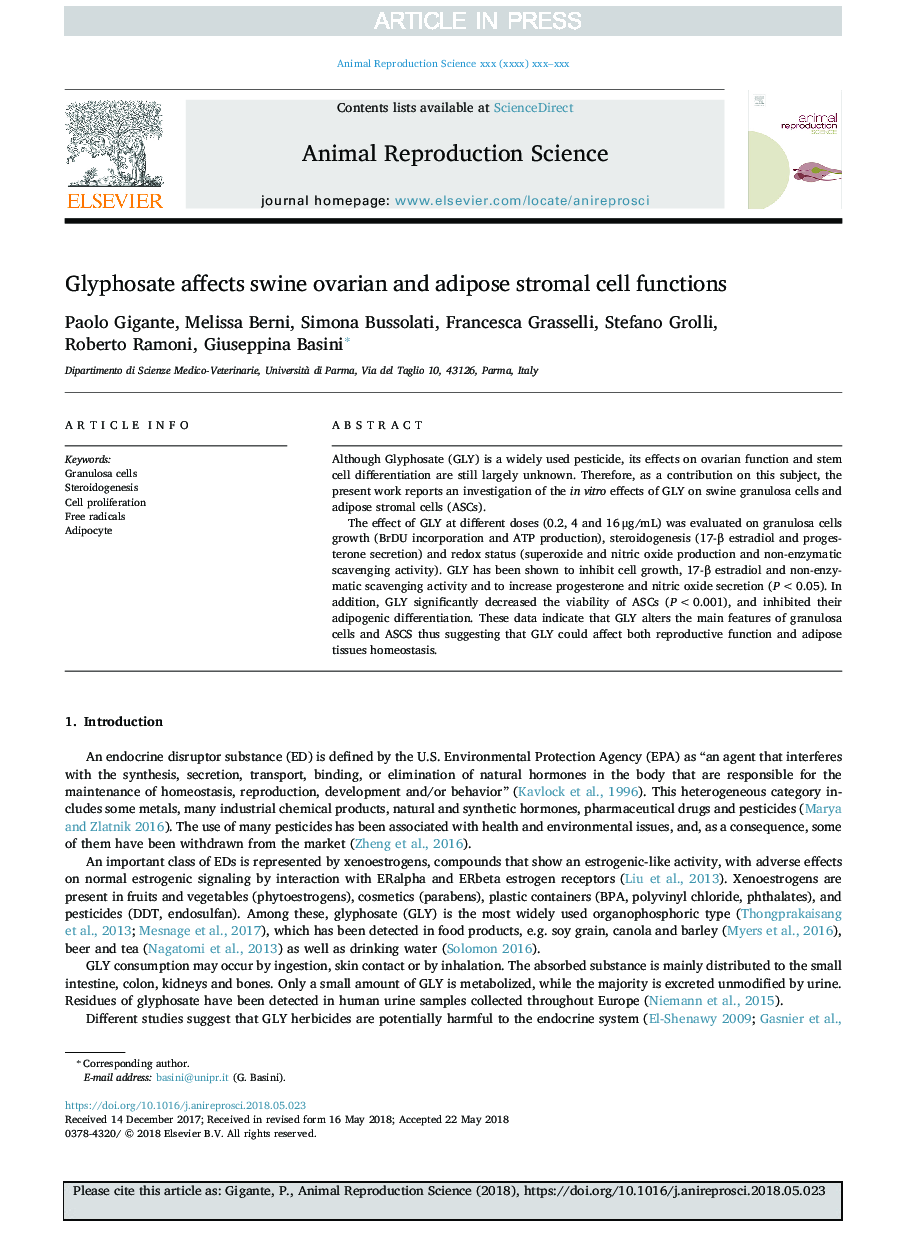| Article ID | Journal | Published Year | Pages | File Type |
|---|---|---|---|---|
| 8403820 | Animal Reproduction Science | 2018 | 12 Pages |
Abstract
The effect of GLY at different doses (0.2, 4 and 16â¯Î¼g/mL) was evaluated on granulosa cells growth (BrDU incorporation and ATP production), steroidogenesis (17-β estradiol and progesterone secretion) and redox status (superoxide and nitric oxide production and non-enzymatic scavenging activity). GLY has been shown to inhibit cell growth, 17-β estradiol and non-enzymatic scavenging activity and to increase progesterone and nitric oxide secretion (P < 0.05). In addition, GLY significantly decreased the viability of ASCs (P < 0.001), and inhibited their adipogenic differentiation. These data indicate that GLY alters the main features of granulosa cells and ASCS thus suggesting that GLY could affect both reproductive function and adipose tissues homeostasis.
Related Topics
Life Sciences
Agricultural and Biological Sciences
Animal Science and Zoology
Authors
Paolo Gigante, Melissa Berni, Simona Bussolati, Francesca Grasselli, Stefano Grolli, Roberto Ramoni, Giuseppina Basini,
